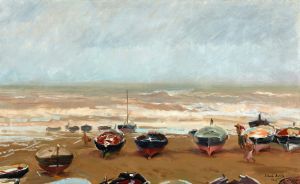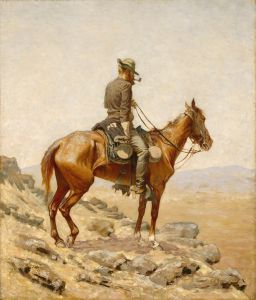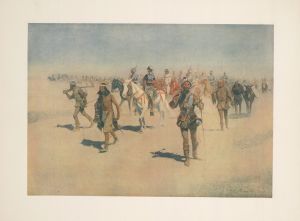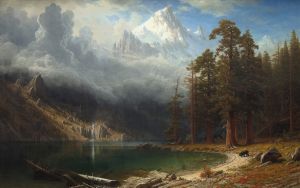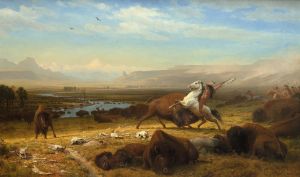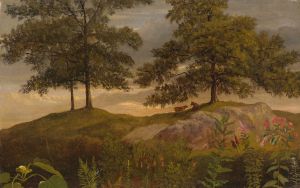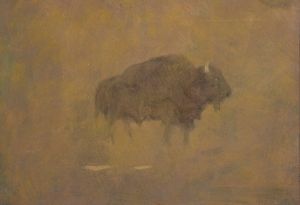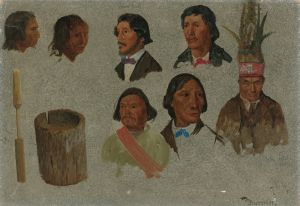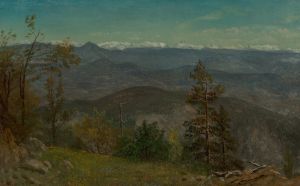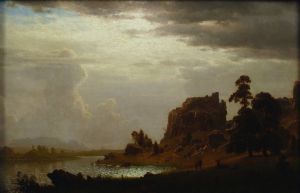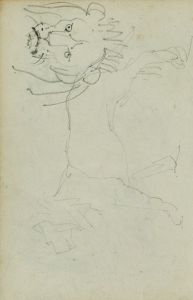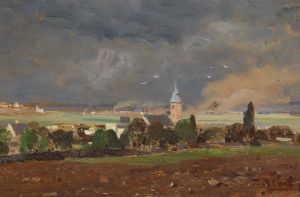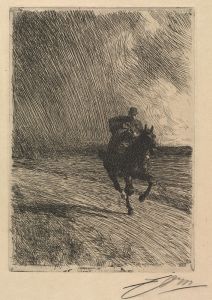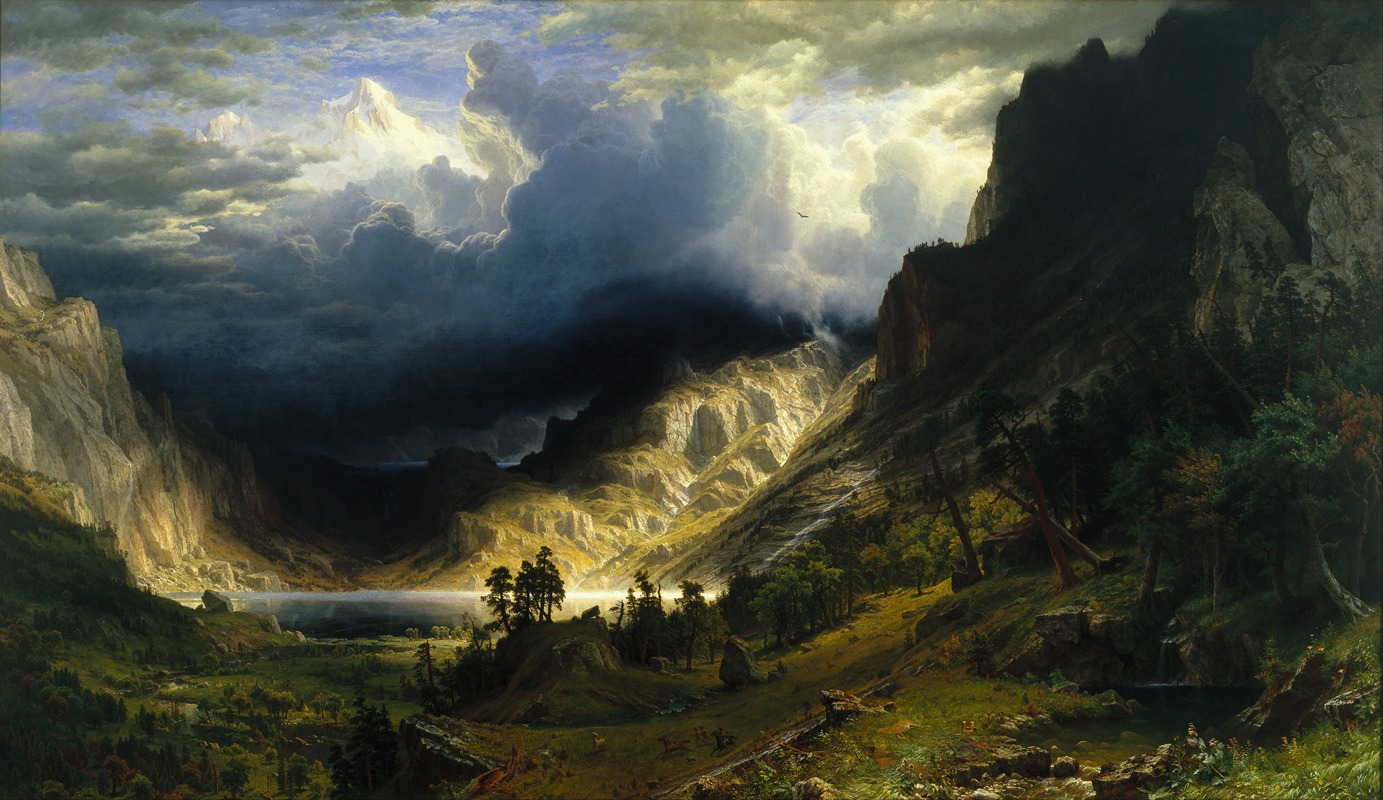
A Storm in the Rocky Mountains, Mt. Rosalie
A hand-painted replica of Albert Bierstadt’s masterpiece A Storm in the Rocky Mountains, Mt. Rosalie, meticulously crafted by professional artists to capture the true essence of the original. Each piece is created with museum-quality canvas and rare mineral pigments, carefully painted by experienced artists with delicate brushstrokes and rich, layered colors to perfectly recreate the texture of the original artwork. Unlike machine-printed reproductions, this hand-painted version brings the painting to life, infused with the artist’s emotions and skill in every stroke. Whether for personal collection or home decoration, it instantly elevates the artistic atmosphere of any space.
"A Storm in the Rocky Mountains, Mt. Rosalie" is a significant oil painting by the renowned 19th-century American artist Albert Bierstadt. Completed in 1866, this work is a quintessential example of the Hudson River School style, which is characterized by its romantic portrayal of the American landscape. Bierstadt, known for his grandiose and dramatic landscapes, captures the sublime beauty and vastness of the American West in this painting.
Albert Bierstadt was born in Germany in 1830 and immigrated to the United States with his family at a young age. He became one of the most prominent painters of the American West during the 19th century. Bierstadt's works are celebrated for their meticulous detail, vibrant color, and the ability to evoke the awe-inspiring majesty of nature. His paintings often served as a visual record of the American frontier during a time when the West was largely unknown to the Eastern United States and Europe.
"A Storm in the Rocky Mountains, Mt. Rosalie" depicts a dramatic scene in the Rocky Mountains, with the central focus being Mount Rosalie, which is now known as Mount Evans, located in Colorado. The painting illustrates a storm sweeping over the rugged mountain landscape, with dark, swirling clouds dominating the sky. The foreground is filled with lush greenery and a tranquil lake, which reflects the tumultuous sky above. The contrast between the serene foreground and the stormy background creates a dynamic tension that is a hallmark of Bierstadt's work.
Bierstadt's journey to the Rocky Mountains in the 1860s provided him with the inspiration for this painting. He was part of a government-sponsored expedition led by the prominent explorer and geologist, Ferdinand Vandeveer Hayden. During this expedition, Bierstadt made numerous sketches and studies of the landscape, which he later used as references for his large-scale studio paintings. "A Storm in the Rocky Mountains, Mt. Rosalie" is one of the masterpieces that emerged from this period of exploration.
The painting was first exhibited at the National Academy of Design in New York City in 1866, where it received widespread acclaim. It was praised for its impressive scale, measuring approximately 210 x 361 cm (6.9 x 11.8 feet), and its ability to convey the grandeur and power of the natural world. Bierstadt's use of light and shadow, along with his attention to detail, creates a sense of depth and realism that draws viewers into the scene.
Today, "A Storm in the Rocky Mountains, Mt. Rosalie" is housed in the Brooklyn Museum in New York. It remains a testament to Bierstadt's skill as a landscape painter and his contribution to the artistic documentation of the American West. The painting continues to be celebrated for its artistic merit and its role in shaping the perception of the American wilderness during the 19th century. Through works like this, Bierstadt played a significant role in popularizing the natural beauty of the American landscape, influencing both contemporary and future generations of artists and explorers.





